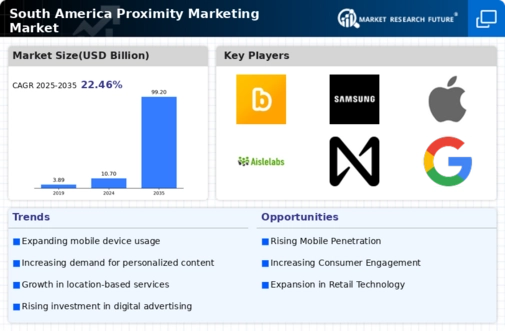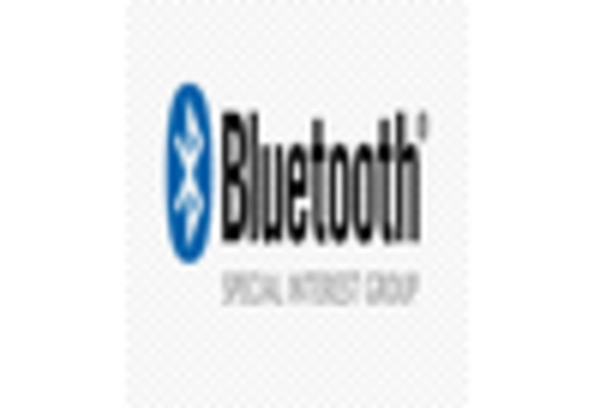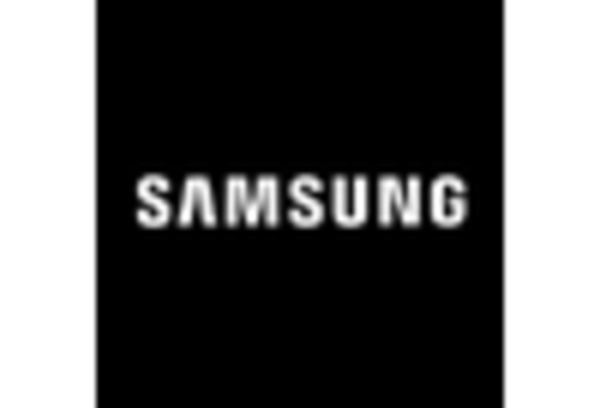Expansion of Retail Outlets
The expansion of retail outlets across South America is significantly influencing the proximity marketing market. As retail chains continue to grow, they are increasingly adopting proximity marketing strategies to enhance customer engagement and drive foot traffic. In 2025, it is estimated that retail sales in the region will surpass $500 billion, with a substantial portion attributed to innovative marketing techniques. Retailers are utilizing proximity marketing to send tailored offers and promotions to consumers' mobile devices when they are in close proximity to their stores. This approach not only boosts sales but also fosters brand loyalty among consumers. The proximity marketing market is thus experiencing a surge in demand as retailers recognize the potential of location-based marketing to optimize their operations and improve customer experiences.
Rising Smartphone Penetration
The increasing penetration of smartphones in South America is a pivotal driver for the proximity marketing market. As of 2025, smartphone usage in the region has reached approximately 80%, facilitating seamless access to location-based services. This trend indicates that consumers are more likely to engage with proximity marketing campaigns, as they are equipped with devices that support such technologies. The proliferation of mobile applications that utilize geolocation features further enhances the effectiveness of proximity marketing strategies. Businesses are leveraging this trend to deliver personalized content and promotions directly to consumers' devices, thereby increasing engagement rates. The proximity marketing market is likely to benefit from this growing smartphone adoption, as it allows for more targeted and efficient marketing efforts, ultimately driving revenue growth for companies operating in this space.
Growth of Location-Based Services
The growth of location-based services (LBS) in South America is a crucial driver for the proximity marketing market. With advancements in GPS technology and mobile connectivity, businesses are increasingly utilizing LBS to enhance their marketing strategies. As of 2025, the LBS market in South America is projected to reach $3 billion, indicating a robust demand for location-aware applications. This growth is likely to propel the proximity marketing market, as companies leverage LBS to deliver contextually relevant advertisements and promotions to consumers. The ability to track consumer behavior and preferences in real-time allows businesses to tailor their marketing efforts, thereby increasing conversion rates. Consequently, the integration of LBS into marketing strategies is expected to become a standard practice among businesses aiming to capitalize on the benefits of proximity marketing.
Increased Investment in Digital Advertising
In South America, there is a notable increase in investment in digital advertising, which serves as a significant driver for the proximity marketing market. As businesses recognize the importance of digital channels, advertising expenditures are projected to grow by 15% annually through 2025. This shift towards digital platforms allows companies to implement proximity marketing strategies more effectively, reaching consumers at the right time and place. The proximity marketing market is likely to see enhanced growth as businesses allocate more resources to digital campaigns that utilize geolocation data. This trend suggests that companies are becoming more adept at integrating proximity marketing into their overall advertising strategies, thereby maximizing their return on investment and improving customer engagement.
Consumer Demand for Personalized Experiences
The increasing consumer demand for personalized experiences is a driving force behind the proximity marketing market in South America. As consumers become more accustomed to tailored marketing messages, businesses are compelled to adopt proximity marketing strategies that cater to individual preferences. Surveys indicate that over 70% of consumers in the region express a preference for personalized offers based on their location and shopping habits. This trend highlights the importance of understanding consumer behavior and leveraging data analytics to create targeted marketing campaigns. The proximity marketing market is thus positioned to thrive as businesses invest in technologies that enable them to deliver customized experiences, ultimately fostering customer loyalty and enhancing brand perception.


















Leave a Comment